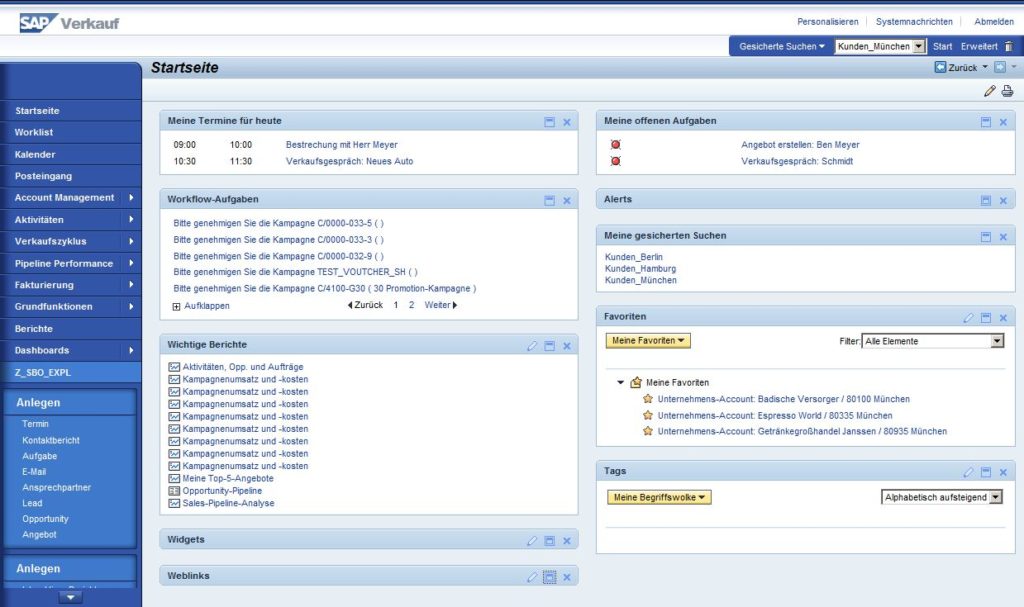An SAP transaction code, also called a t-code, is similar to a website’s URL.
You invoke a website by typing its URL into the address bar of a web browser.
You invoke a SAP user interface and run a program when you add a SAP transaction code to the SAP GUI.
Let’s dive right into the details!
SAP Transaction Codes Made Simple
To understand what an SAP transaction code is, or t-code, you need to first understand the context in which an SAP transaction code takes place.
First of all, what’s SAP: SAP (System, Applications, and Programs in Data Processing) is a HUGE company that makes business software.
To be more specific, SAP makes software that manages processes within a company.
SAP’s flagship products are ERP (Enterprise Resource Planning) applications. These applications run on-premise, in the cloud, or both of them.
Let’s look at the differences between on-premises and cloud computing:
SAP On-Premise vs. Cloud Computing
SAP’s applications are either on-premise or cloud-based.
On-premise applications run on the company’s own hardware, whereas cloud computing applications run on the cloud computing application provider’s hardware. Or a third party that again provides the necessary infrastructure for the cloud computing application provider.
For example, SAP offers to run its SAP BTP (SAP Business Technology Platform), formerly known as SCP (SAP Cloud Platform) in its own data centers. But they offer to run it in data centers of Amazon, Google, Microsoft, or Alibaba as well.
On-premise means that the company installs and maintains the software themselves. The company also provides the necessary hardware for the software such as the server infrastructure on top of the IT stuff.
On-premise basically means owning and maintaining your own software.
Cloud computing means the cloud computing provider takes care of the installation and upkeep, and the customer accesses the application through the cloud.
The cloud is just hardware and software maintained by a third party. Nothing more than an application on a server you access through the internet.
It’s like housing: Instead of making a big investment and buying a house, most people choose to rent a house. They don’t have to take care of maintenance and renovation themselves, but they can still live in the house as if they owned it.

On-premise has been the typical way for businesses to run their software. Cloud computing is becoming more and more common now.
Small and medium-sized businesses are especially interested in cloud computing.
The biggest advantage of cloud computing for smaller businesses is that it has lower upfront costs and predictable costs over time.
On the downside, cloud computing apps aren’t very customizable. To go back to the rent a house example: you can’t tear down a wall in a house you rent.
Here are the biggest challenges of cloud computing technology in 2019 and 2020:
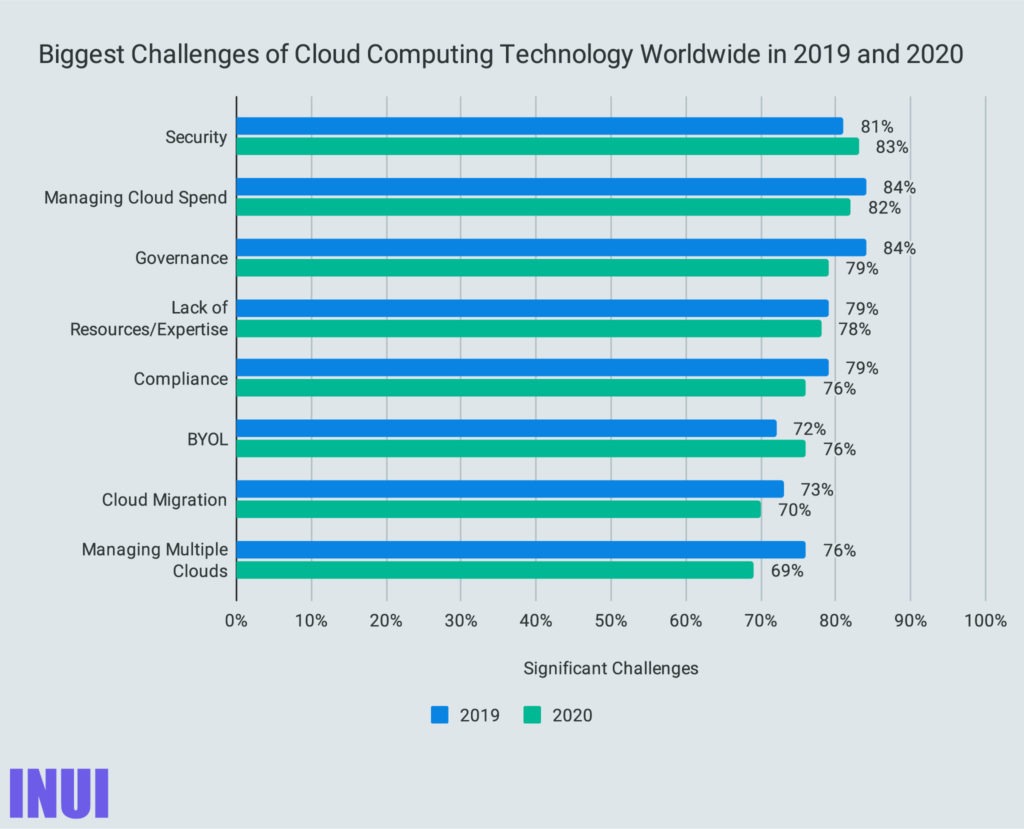
Large enterprises still tend to go with on-premise software because it’s highly customizable.
Plus, large enterprises don’t care about investing upfront in hardware or already own it.
Another major factor is that the data and its protection is in the enterprise’s hand itself and not a third party because the software runs on the enterprise’s hardware.
What’s the bottom line?
SAP On-Premise Applications Use Transaction Codes
Transaction codes are part of SAP’s on-premise applications. That’s why we did the on-premises vs. cloud thing first.
SAP’s most prominent on-premise applications are:
- SAP ECC (ERP Central Component)
- SAP CRM (Customer Relationship Management) 7.0
- SAP S/4HANA (Suite 4 High-Performance Analytical Appliance)
All these applications use the SAP GUI (Graphical User Interface). SAP S/4HANA also uses another user interface called SAP Fiori, but more on that later.
Imagine the SAP GUI as a web browser for SAP applications.
The SAP GUI looks like it was beamed straight from the 90s:
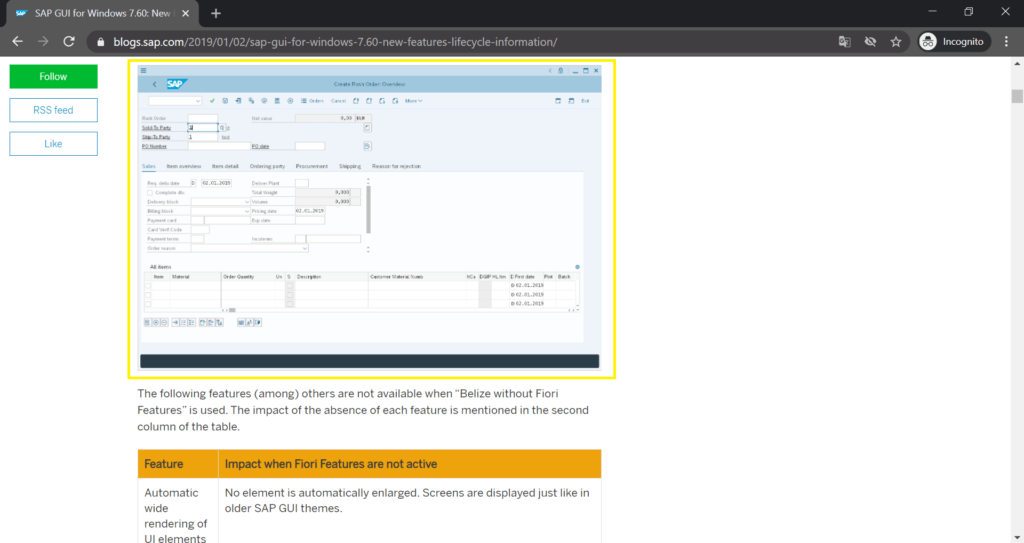
A web browser lets you jump from one website to another on the Internet.
The SAP GUI lets you go from one user interface or program to another in an SAP application.
SAP Transaction Codes vs. Website URLs
In a web browser, you invoke a website by entering the website’s URL into the address bar of the web browser. For example, google.com.
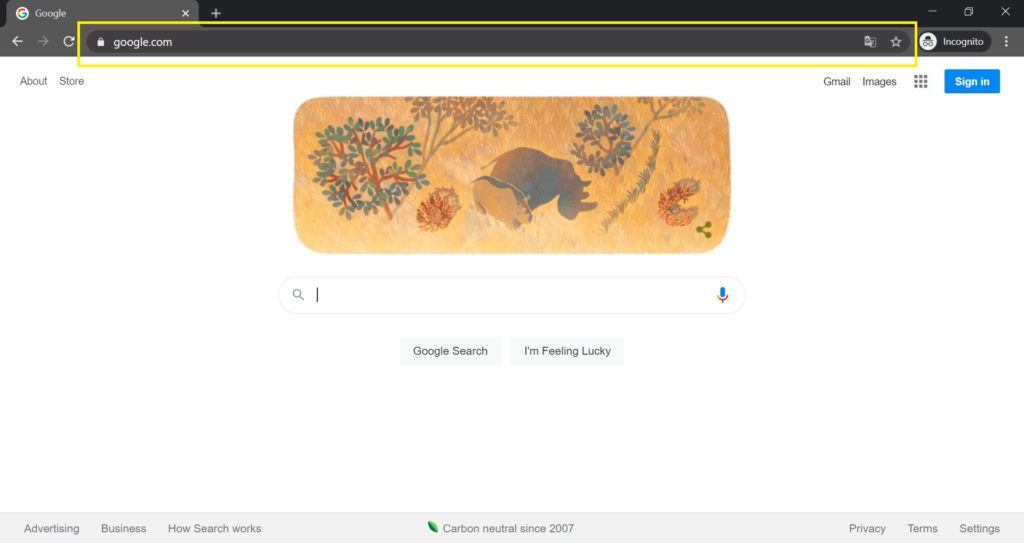
In the SAP GUI, you navigate to a specific SAP user interface or execute a program by entering a SAP transaction code in the SAP GUI’s SAP command field.
The SAP GUI has it in the top left corner next to a button with a check mark:
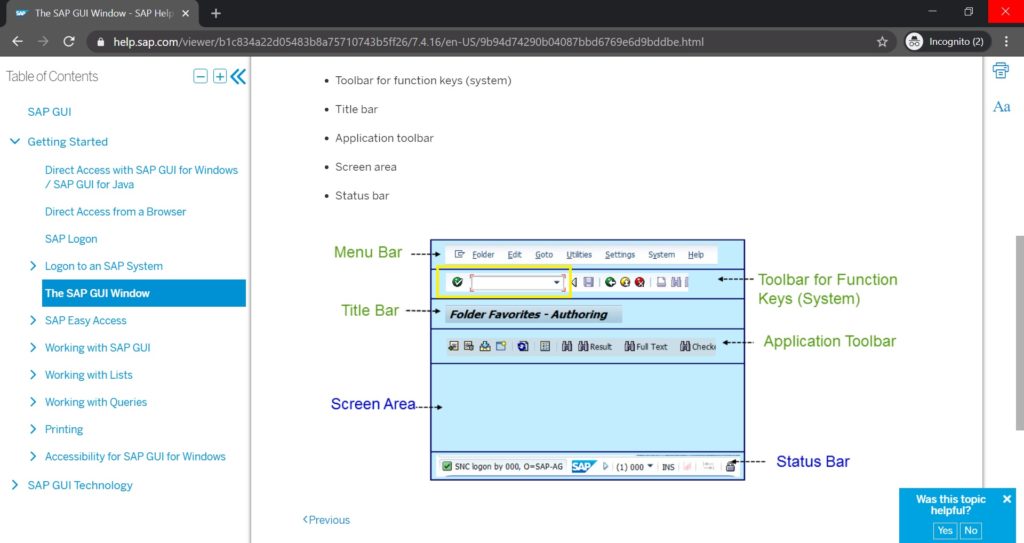
For example, to trigger the user interface for creating a sales order, you enter the SAP transaction code VA01 into the SAP command field in SAP GUI.
You might be wondering whether SAP GUI has a future since it’s kind of old and looks outdated:
The SAP GUI Will Survive
SAP GUI is the standard user interface for SAP’s former ERP flagship products SAP R/3 (SAP Real-Time Tier 3) and SAP ECC (SAP ERP Central Compontent). As well as for its #1 CRM on-premise system SAP CRM 7.0 (SAP Customer Relationship Management 7.0).
With the difference that SAP CRM 7.0 has the SAP GUI for administrators and developers. The SAP CRM WebClient UI is the user interface SAP CRM 7.0 uses for key and end users.
The SAP Web UI looks like a website and is accessible through a web browser:
However, SAP’s newest ERP application SAP S/4HANA still uses the SAP GUI for admins and developers.
But similar to the SAP CRM 7.0, SAP S/4HANA features an additional user interf’s key and end users:
SAPUI5 with SAP Fiori.
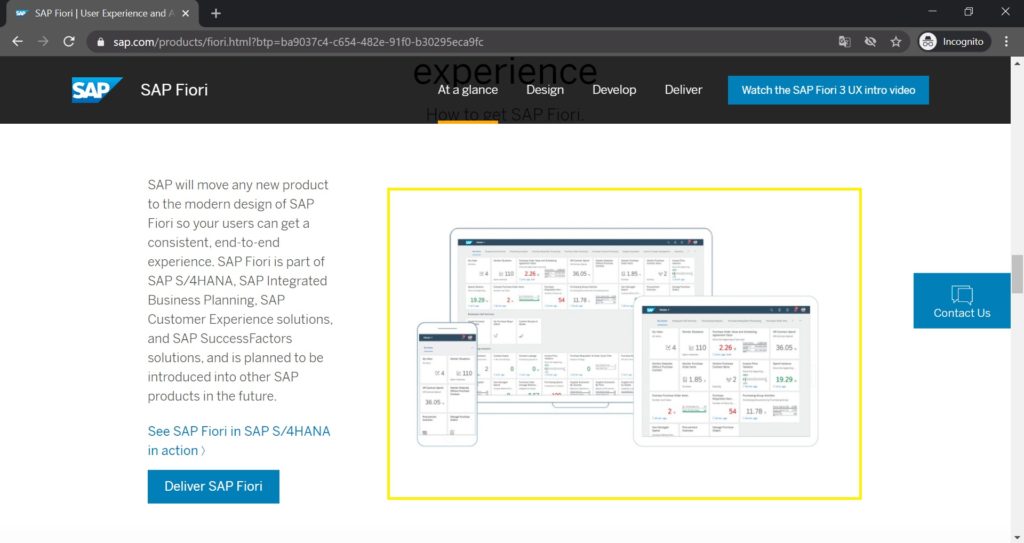
SAPUI5 is a framework based on HTML, CSS, and JavaScript to build web applications. SAP Fiori are design guidelines for how a SAP web application is supposed to look and feel. SAP Fiori is SAP’s new UX (User Experience) strategy.
The SAP Fiori Launchpad is the central entry point for an end user in SAP S/4HANA:
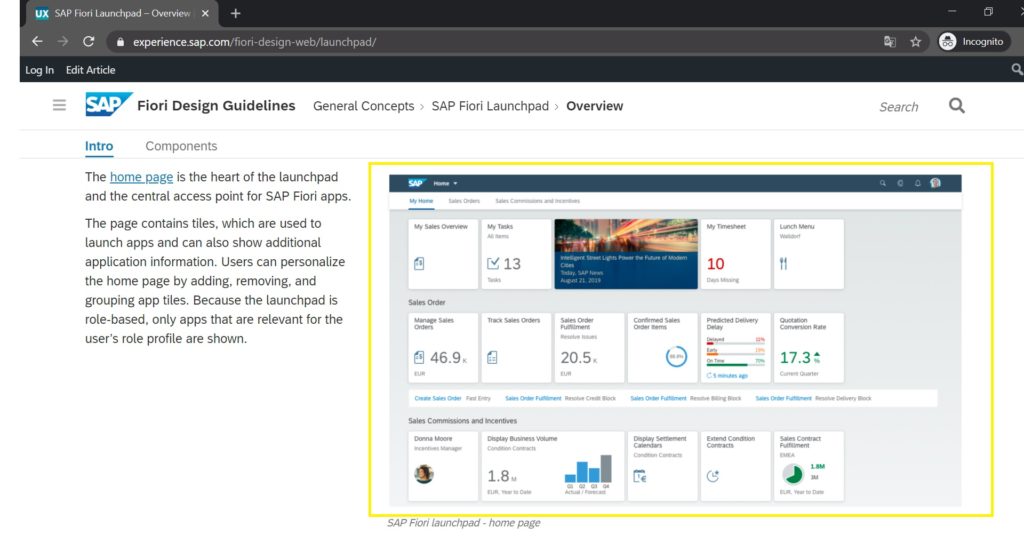
The SAP Fiori Launchpad is a portal with SAPUI5 apps accessible by tiles. The SAP Fiori Launchpad is similar to a mobile phone’s user interface.
SAP’s latest flagship SAP S/4HANA still includes the SAP GUI for administrators and developers, and that is more than justified.
Nonetheless, though the SAP GUI might look outdated, for an administrator or d’s the most efficient way to navigate and use the SAP system. It just takes a little time and practice to figure it out. it’s not as simple and intuitive as SAP Fiori apps.
On the contrary, to an end-user or an administrator, a developer doesn’t need a beautiful user interface in which he can click around.
As an administrator or developer, you need a user interface that allows you to interact with the system on a deeper technical level even if it doesn’t look that good.
And for administration and development, SAP GUI is much faster and more efficient than any other browser-based user interface. The SAP GUI will last another couple of decades.
So that’s good you now know what SAP transaction codes are.
Simple SAP Transaction Code Definition
SAP defines transaction codes as follows:
A twenty-character name which is assigned to a screen, another transaction code, or a method of an ABAP program and is used for program execution.
Transaction codes associated with screens can be used for executable programs, module pools, and function groups. Parameter transactions and variant transactions are associated with other transaction codes.
Transaction codes linked to methods are allowed for all program types that can contain methods. Transaction codes are maintained and managed using transaction code SE93.
A SAP transaction code is a key you enter in the SAP GUI command field to navigate to a specific user interface or run a program of an SAP on-premises application.
Originally, SAP transaction codes were 4 characters long, and the first character described the business area.
For example, SAP transaction code MMI1 is used to create operation supplies in material management, and FBU3 is used to display intercompany documents in finance.
Transaction codes can now have up to 20 characters and contain name spaces like /ACCGO/BLKPP. /ACCGO/ is the name space for agricultural contract management, and BLKPP is the interface for maintaining contract types and their statuses.
Currently, there are more than 120,000 SAP transaction codes.
There are 120,000+ SAP transaction codes. Behind each SAP transaction code is a program that is executed when the SAP transaction code is invoked.
You can see all SAP transaction codes in the database table TSTC: enter the transaction code SE16 in the SAP GUI command field to navigate to the data browser, then invoke the database table TSTC in the data browser.
SAP Transaction Codes vs. SAP Easy Access Menu
The SAP GUI also provides a menu called SAP Easy Access to provide access to specific user interfaces or programs instead of using an SAP transaction code. The menu is structured like a tree:
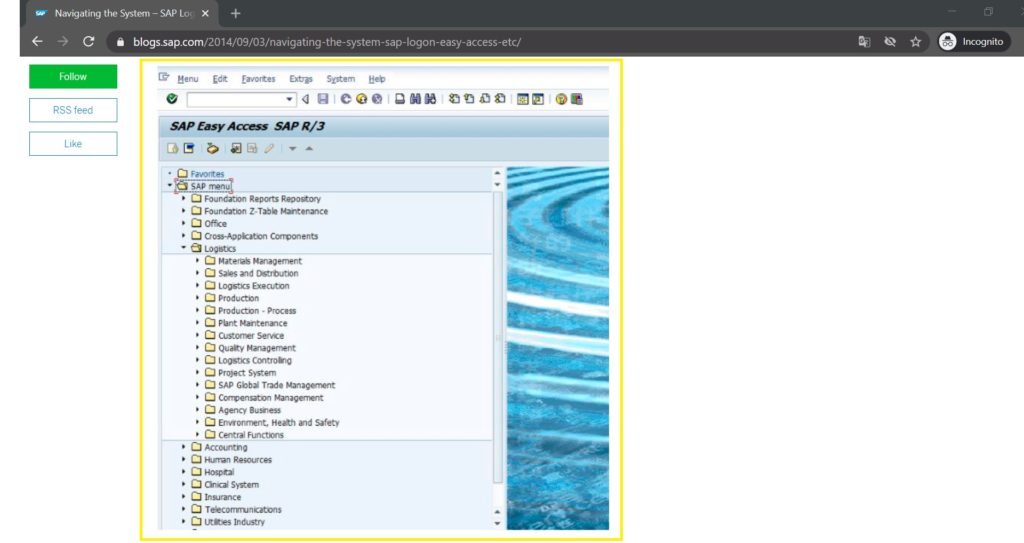
The SAP Easy Access menu is useful if you don’t know the t-code, but it takes quite a lot of time to navigate through it.
The SAP Easy Access menu can be customized to add transaction codes as favorites to access them more quickly and without a lot of clicking. But often it’s still not as fast as just typing the transaction code in the SAP GUI command field.
SAP transaction codes are like shortcut keys. They let you access functions or run programs faster than if you had to click around in a user interface.
As users become more familiar with SAP applications that use the SAP GUI, they’ll learn the transaction codes they use most frequently and their performance in the application will improve.
Most SAP Cloud Applications Don’t Use Transaction Codes
On the contrary to SAP on-premise application, most SAP cloud applications don’t use transaction codes.
Many SAP cloud applications are like websites. You invoke different functions of an application by entering URLs into your web browser. Your browser is your SAP GUI.
SAP cloud applications use different technologies for their respective user interfaces that you see in your web browser, but most of those don’t work on the concept of t-codes.
Even though most SAP cloud applications are built with different front end technologies, SAP tends to provide the same look and feel across all user interfaces with the SAP Fiori.

